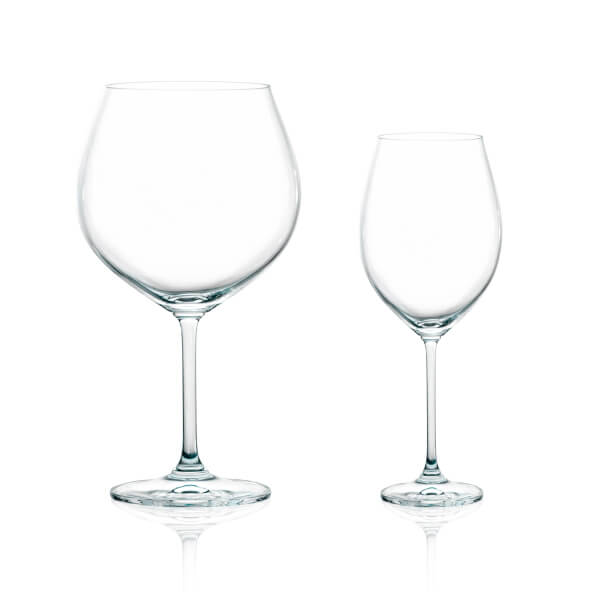
Choosing the Correct Wine Glass
Enjoying wine is an interactive process involving three components – the wine, the drinker, and the glass, and of the three, the one drinking the wine plays the least significant role. It is the wine, and how the glass presents it, that are the most important factors. Without the correct glass, even the best wines will fall short of expectations.
Because every wine has specific characteristics, and character, to offer, wine glasses are designed and shaped to highlight those attributes for full enjoyment. This does not mean that wine can only be enjoyed in a particular glass (quite the contrary), but when in the proper receptacle, all of its qualities can be fully savored – even the guilty-pleasure-three-dollar-bottle of generic red or white table wine.
Granted, there are some wines that are better when the glass is eschewed – and they are probably better chewed – but discussions of how to pair wines with brown paper bags and straws are for a later time.
Parts of a Wine Glass
The best vessels for drinking wine are made from clear glass (thinner is better) and have four distinct parts, all contributing to the pleasures of the grape. From the table up, these parts are:
- The foot, which allows the glass to remain upright when placed on a surface.
- The stem, which is connected to the foot and permits the glass to held without residual heat from the drinker’s hand raising the temperature of the wine. It also allows an unobstructed view of the wine when it is being examined for color, clarity, and texture.
- The bowl, which is connected to the stem, holds the wine. This part has the greatest variation in wine glass design, and is the most crucial element. However, all bowls will be larger at the stem, tapering as the sides move upwards towards the rim.
- The rim, found at the top of the bowl contributes to how effectively the wine enters the mouth from the bowl; its size, thickness, and construction all contribute to this process. The best wine glasses, for either reds or whites, have thin rims that have been cut and polished rather than rolled. A rolled lip interferes with how the wine disperses in the mouth.
How wine and the glass interact
The bowl and its rim are the key components in any wine glass. Each type of wine has an ideal surface area in relation to how much oxygen it must absorb (known as breathing). Champagne glasses will have the smallest bowl and rim in order to retain carbonation, while glasses for red wine will have the largest bowls and openings. White wine stemware will fall between these two designs. Additionally, the shape concentrates the wine’s bouquet (aroma) and directs it towards the mouth and nose.
The height of the glass and circumference of the rim are designed to direct the wine to the proper areas of the mouth as well as allowing the nose to play its role in flavor detection. Tall and narrow directs the wine further into the mouth and onto the tongue, while shorter and wider glasses place the wine more towards the front, on the tip of the tongue, and brings the nose into play.
Red Wine Stemware
The bowls of red wine glasses are fuller and rounder with larger openings than those found on other wine glasses with comparable capacities, and provide greater interaction with air so the complexities of the wine are more readily appreciated.
Within this category, there are variations, with Bordeaux wine glasses for full bodied wines such as Merlots and Cabernets and Burgundy wine glasses that are better for serving Pinot Noirs and other lighter, though full-bodied, wines.
White Wine Glasses
As with red wines, the bowl of a white wine glass is designed to allow proper appreciation of a wine’s bouquet. However, the general shape is narrower, more like a “U”, so that the wine it holds will not warm too quickly. For younger, less mature whites, the glass should have a larger opening so that the wine slides towards the sides of the tongue as it passes its tip, enhancing its sweeter profile. Mature wines are better enjoyed when taken from a glass that is a bit taller with slighter straighter sides so the wine finds the back and sides of the tongue.
There are a few guidelines for selecting stemware for Rosé wines, but because their fermentation process is similar to white wines, they will perform just as well when served in that type of glass.
While wine can be enjoyed under almost any circumstances, to derive the greatest pleasure from the fruit of the vine, investing in proper stemware will add to delight and charm of any vintage whether at a formal meal, a backyard barbecue, or just sitting around with goods friends and relaxing in the pleasure of their company.